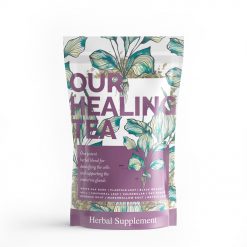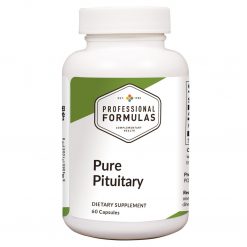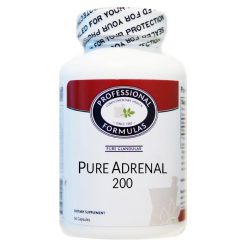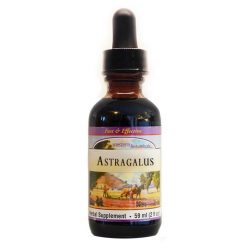No products in the cart.
Our Licorice Root Extract
$33.95
Herbal Tincture Extracted from: Dried root
Also known as: Glycyrrhiza glabra, Glycyrrhiza uralensis (and several other species, some dangerous) True Licorice, Sweet Licorice, Chinese Licorice.
Only 2 left in stock
SKU: URLC01 Categories: Our Botanicals Products, Our Endocrine Formulas, Our Favourite Formulas, Single Herb Extracts & Capsules
INTRODUCTION
Licorice root is one of the most widely used medicinal herbs worldwide and is the single most used herb in Chinese medicine today. It was used by the Egyptians as a flavoring for a drink called Mai-sus, and large quantities were found in the tomb of King Tut for his trip into the afterlife. Pliny the Elder recommended it to clear the voice and alleviate thirst and hunger. Dioscides, when traveling with Alexander the Great, recommended that his troops carry and use licorice to help with stamina for long marches, as well as for thirst in areas of drought. In the Middle Ages it was taken to alleviate the negative effects of highly spicy or overcooked food. It was also used for flavoring tobacco, and as a foaming agent in fire extinguishers and beer. In a recent survey of Western medical herbalists, licorice ranked as the 10th most important herb used in clinical practice. An astonishing number of Chinese herbal formulas (over 5,000) use licorice to sweeten teas and to “harmonize” contrasting herbs. Its first documented use dates back to the time of the great Chinese herbal master Zhang Zhong Zhing, about 190 AD, but it was certainly used for many centuries prior to this. In 1914 the Chicago Licorice Company began to sell Black Vines, the first in a very long line of licorice based modern candies.
CONSTITUENTS
Glycyrrhizin, complex immune-stimulant sugars.
TYPICAL PREPARATIONS
Teas, tinctures, and in encapsulations. The whole sticks and slices may be chewed straight and are pleasant tasting.
SUMMARY
The distinctive flavor and sweetness of licorice comes from the glycyrrhizin that composes up to 25% of the root’s makeup. The root itself is hard and fibrous, and is thus typically used for food only as a liquid flavor infusion. In fact, many licorice flavored candies include no real licorice, and are instead flavored with similarly flavored spices such as anise and fennel.
Medicinally, Chinese licorice is a renowned component of traditional Chinese medicine, and is recognized as one of its fifty fundamental herbs. It shares many of the constituents common with Glycyrrhiza glabra, but uniquely, it also contains the flavonoid quercitin, which has been studied for a variety of medical uses.
Chinese licorice is not as well studied as its European counterpart, but both are indicated for many of the same functions. Licorice root may be used to assist with upper respiratory catarrhs and is recognized by traditional Chinese practitioners as an adaptogen, helping the body to cope with daily stress. It may also be used to relieve minor abdominal discomfort, and is used in the herbal preparation STW-5 to alleviate dyspepsia.
PRECAUTIONS
Specific: Not for use in pregnancy except under the supervision of a qualified healthcare practitioner. Not for use in persons with hypertension, liver disorders, edema, severe kidney insufficiency, low blood potassium, or heart disease.
General: We recommend that you consult with a qualified healthcare practitioner before using herbal products, particularly if you are pregnant, nursing, or on any medications.
2 reviews for Our Licorice Root Extract
Add a review Cancel reply
You must be logged in to post a review.
Herbal Tinctures Dosage Directions:
Tinctures are usually taken 1 dropperFULL 2-3 times per day. You can mix the dropper in water or juice if you find the taste is too strong for you, although I prefer to take mine 'straight'. If you are using multiple tinctures together in your protocol then you can mix the dosages into a 'shot-glass' to take if you wish.
Herbal Capsules Dosage Directions:
Capsules are usually taken 2 capsules 2-3 times per day, usually chased with water or juice to help them go down smoothly.
Herbal Teas Dosage Directions:
it is a perfect way to bring the healing power of herbs into your body throughout the day. Plus, making and drinking tea is always a beautiful way to have a special ceremonial time just for you and your wellness. The Heal All Tea is also often used very effectively as a mouth wash and also for douches and enemas.
- Internal: 1 to 3 cups, 2 to 4 times a day.
- Acute: 4 cups per day.
- Chronic: to 1 cup, 3 times a day.
- Douches: 1 cupful, 1 to 2 times a day.
- Enemas: 1 cupful, 1 to 2 times a day.
- Mouthwash: Hold and gargle, one cupful per day.
Caution during pregnancy, especially early pregnancy (first 5 months).
This tea is truly a Heal-All. Use as a douche, enema (colorectal issues), and as a mouthwash for mouth & throat cancers, abscesses, etc Internally a great daily detox tea. Much more powerful than Essiac Tea You may also use this tea as a poultice or fomentation.
GI Broom Dosage Directions:
Powder Form:
Mix 1 rounded teaspoon of The GI Broom in 8-12 oz. of fresh pressed (if possible) grape or apple juice, 1 time daily (either in the mid-morning or before bedtime). Follow immediately with 10-13 oz. of water. If you can't juice, 100% organic fruit juice (preferably in a glass container) is suitable.
Capsule Form:
Take 6 capsules with 10 oz of water once (acute) or twice (chronic) per day as directed by your healthcare practitioner. Be sure to stay hydrated with water or fruit juice. Constipation or dehydration is not wanted! Be sure to adjust bowel formulas so you are moving 3 times per day.
Note: Don't consume with supplements, foods or herbal formulas. Take at least two hours after meals and supplementation. For best results consume during periods of juice or fruit fasting.
Related products
New











Rohan Callander –
This is Dr Robert Morse’s approved Single Licorice Extract that he uses with many patients with low blood pressure and weakened Adrenal Glands. Great stuff.
alexandra –
One of my fav products. I love the flavour of it, yum!